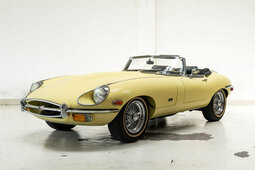It was 1998 when Daimler-Benz and the Chrysler Corporation decided to create the most expensive mistake in the history of the motorcar. They joined forces to conquer the car world and be a fierce competitor to the quickly growing Volkswagen Group, which, under the rule of Ferdinand Piëch, was building an absolute empire of their own.
The newly formed Daimler-Chrysler AG turned out to be a whopping US$38 billion deal, by which the two companies would share technology, platforms and markets. The merger aimed to expand Daimler-Benz's North American presence and strengthen Chrysler's position in Europe, expecting significant cost savings and economies of scale through shared R&D, purchasing, and manufacturing. The companies planned to leverage their complementary strengths—Daimler-Benz's luxury engineering and Chrysler's commercial transport expertise—to create a competitive global leader.
This ordeal gave birth to many 2000s Chrysler products: both the Dodge Challenger and Chrysler 300 were based on the Mercedes-Benz E-class. The 2nd and 3rd generation Jeep Grand Cherokees, along with other Chrysler products used Mercedes drivetrains and other parts. Jeep due to this merger also got an easier chance to sell their line-up of SUVs and CUVs in Europe. Platform sharing for car manufacturing was both good and bad. It saves money and time but in the worst cases, creates cars that lack differentiation. The Big 3 (General Motors, Ford and Chrysler) had squeezed every bit of juice out of this concept to the point that you could barely distinguish different brands and models, especially in the 70s and 80s.
And then, there was the Chrysler Crossfire. From a daring, Art Deco influenced concept car in 2001, it went to being a vehicle misunderstood by most. The Crossfire first saw daylight in 2003. Chrysler handled the interior and exterior styling of the car, while other components like the wheelbase, engine, transmission, and suspension were shared with the Mercedes-Benz R170 platform. The Crossfire's engine bay, seats, dashboard, and controls closely resemble those of the Mercedes-Benz SLK320. It came with a 6-speed manual or optional 5-speed automatic transmission, and the base models featured a 3.2L V6 engine from Mercedes-Benz, while the SRT-6 models had a supercharged version of this engine by AMG. And while the Mercedes-Benz SLK that underpinned the Crossfire was a well-built small roadster that was fit for a variety of drivers, the Crossfire was a bit of a miss.
While a famous TV man with curly hair once said the Chrysler looks like a hunched over dog taking a dump, I’d say it looks like a door stop that one screws to the floor. With an average MSRP of around US$35 thousand dollars, the interior was disappointing with materials similar to a Korean washing machine from 1994. The driving experience was a mixed bag. While the drivetrain was smooth and powerful enough for most, no ability to turn off traction control or travel through corners at higher speeds due to the soft suspension and dead steering made the car only fit for the older, unsuspecting driver. Oh, and the rear hatch was the size of a lunch box’s lid.
Sales were slow. Chrysler discontinued the Crossfire after the 2008 model year, with the last car assembled on December 17, 2007. And afterwards, things got even worse. Even if some cars, like the 300, were successful, others – not so much. The Chrysler 300 was brilliant; loved by Americans so much that they only stopped production in 2024. But strangely styled Jeeps were not favored by Europeans, who preferred more sedate looking VW Tiguans and Toyota RAV4s.
In 2006, Chrysler reported losses of US$1.5 billion, announced plans to lay off 13,000 employees and close a major assembly plant to restore profitability. In early 2007, DaimlerChrysler agreed to sell Chrysler for US$6 billion. DaimlerChrysler became Daimler AG, retaining a 19.9% stake in Chrysler, which filed for bankruptcy in 2009.
Afterwards, Chrysler underwent a significant restructuring. The U.S. government provided financial assistance, and Fiat acquired a 20% stake in the company, which gradually increased over time. By 2014, Fiat had acquired full ownership of Chrysler, merging the two companies to form Fiat Chrysler Automobiles (FCA). Today, Chrysler is part of Stellantis, one of the largest automakers in the world with 14 brands, including Chrysler and other manufacturers who have seen better days. If Lancia and Alfa Romeo come to mind, you’re thinking right.
What went wrong? Nothing new, really. The usual cultural differences and strategic misalignments prevented the realization of Chrysler’s goals. The merger is often cited as a case study in the complexities of integrating diverse companies. Whereas for the car enthusiast, it shows how big investments don’t always result in great cars.
---
Embark on a journey to find your ideal vehicle by browsing through our Car Categories. Or, delve into our Classic Passion Shop for an exciting array of products from our partners, perfect for enthusiasts looking to enhance their collection!













